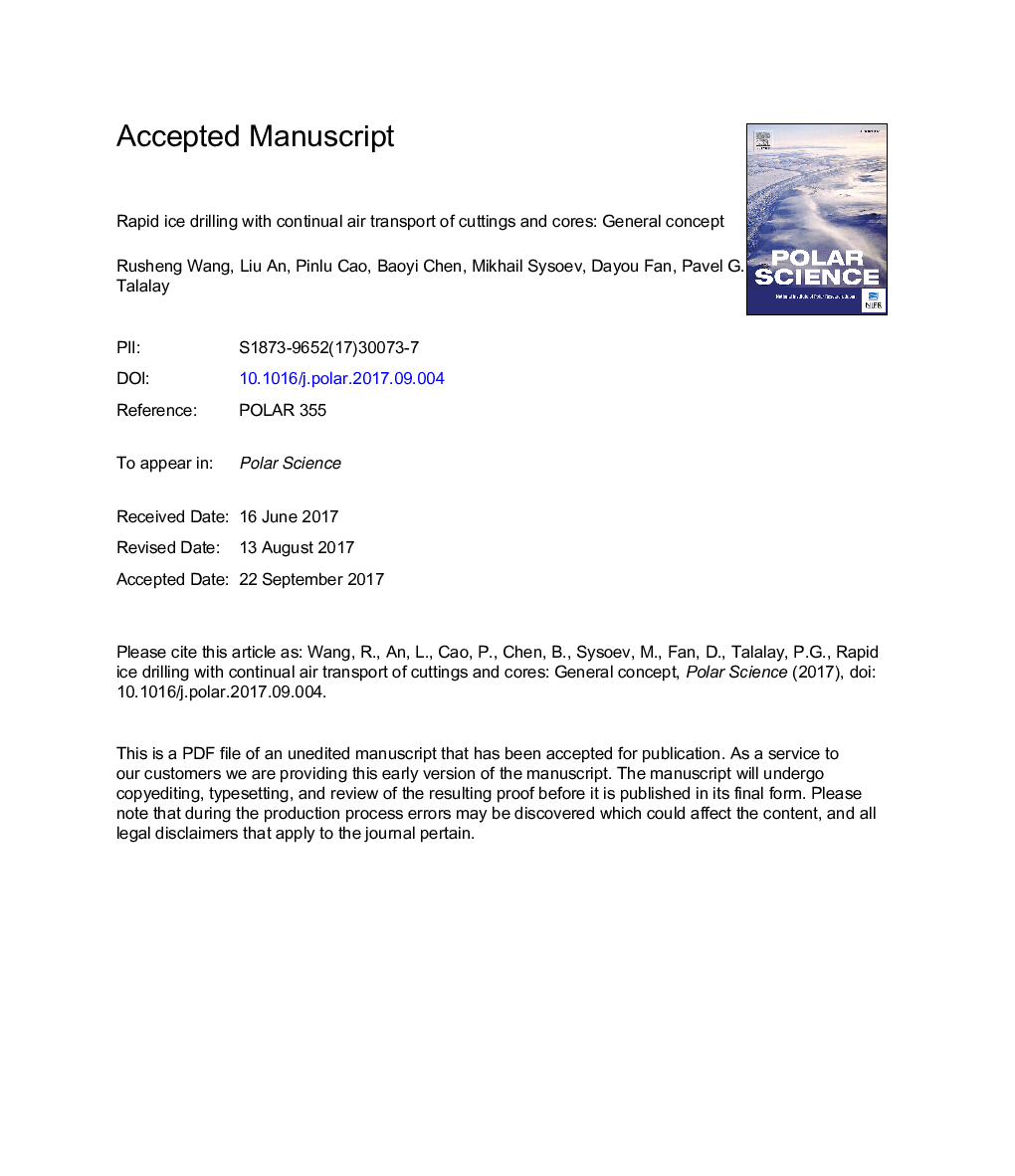| Article ID | Journal | Published Year | Pages | File Type |
|---|---|---|---|---|
| 8907826 | Polar Science | 2017 | 26 Pages |
Abstract
This article describes the investigation of the feasibility of rapid drilling in ice sheets and glaciers to depths of up to 600 m, with cuttings and cores continually transported by air reverse circulation. The method employs dual wall drill rods. The inner tubes provide a continuous pathway for the chips and cores from the drill bit face to the surface. To modify air reverse circulation drilling technology according to the conditions of a specific glacier, original cutter drill bits and air processing devices (air-cooled aftercoolers, air receivers, coalescing filters, desiccant dryers) should be used. The airflow velocity for conveying a 60-mm diameter and 200-mm long ice core should not be lower than 22.5 m/s, and the minimal airflow rate for continual chip and cores transport is 6.8 m3/min at 2.3-2.6 MPa. Drilling of a 600-m deep hole can be accomplished within 1.5 days in the case of 24 h drilling operations. However, to avoid sticking while drilling through ice, the drilling depth should to be limited to 540 m at a temperature of â20 °C and to 418 m at a temperature of â10 °C.
Related Topics
Physical Sciences and Engineering
Earth and Planetary Sciences
Earth and Planetary Sciences (General)
Authors
Rusheng Wang, Liu An, Pinlu Cao, Baoyi Chen, Mikhail Sysoev, Dayou Fan, Pavel G. Talalay,
